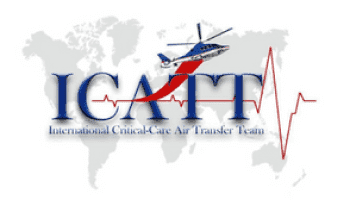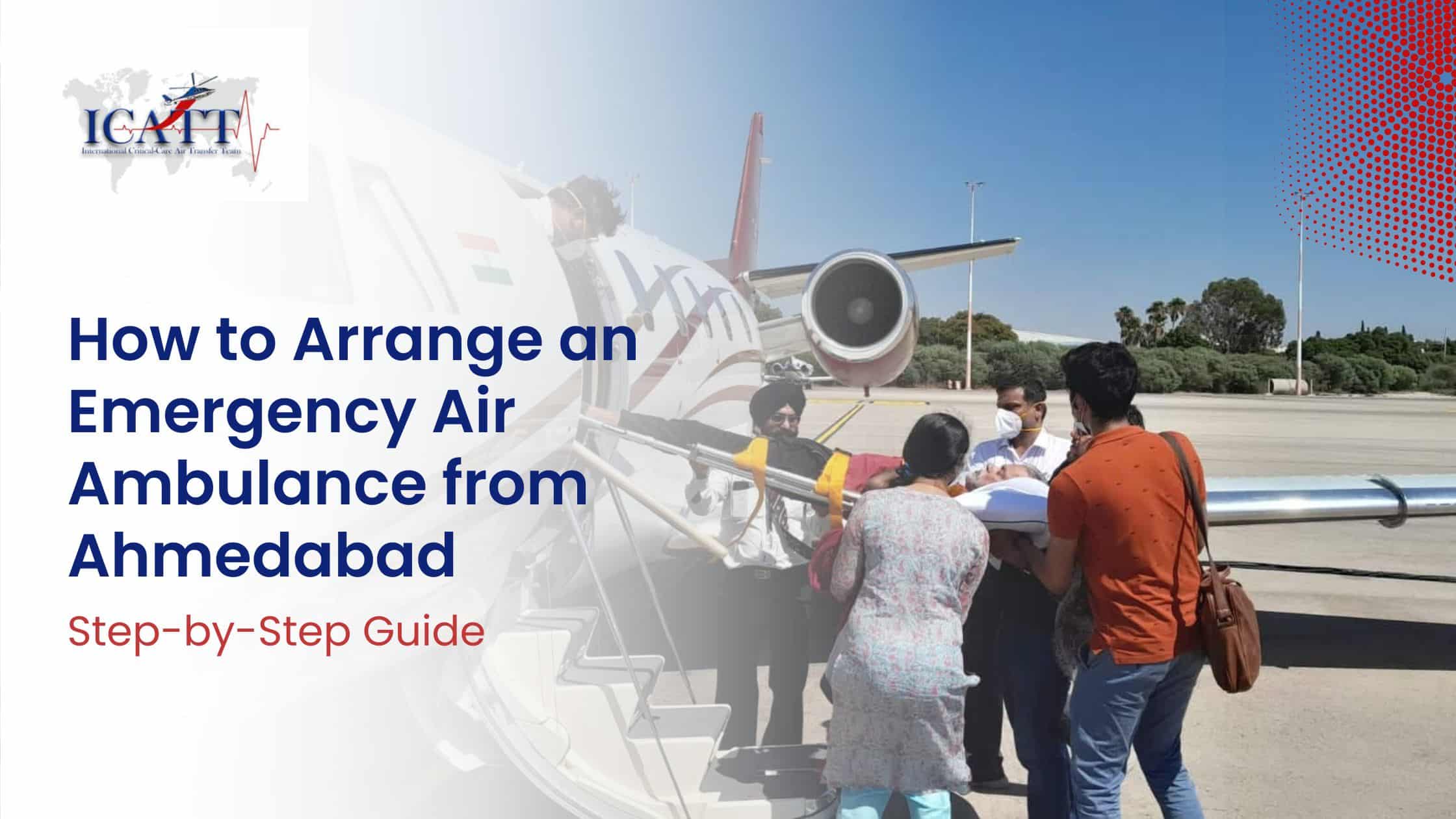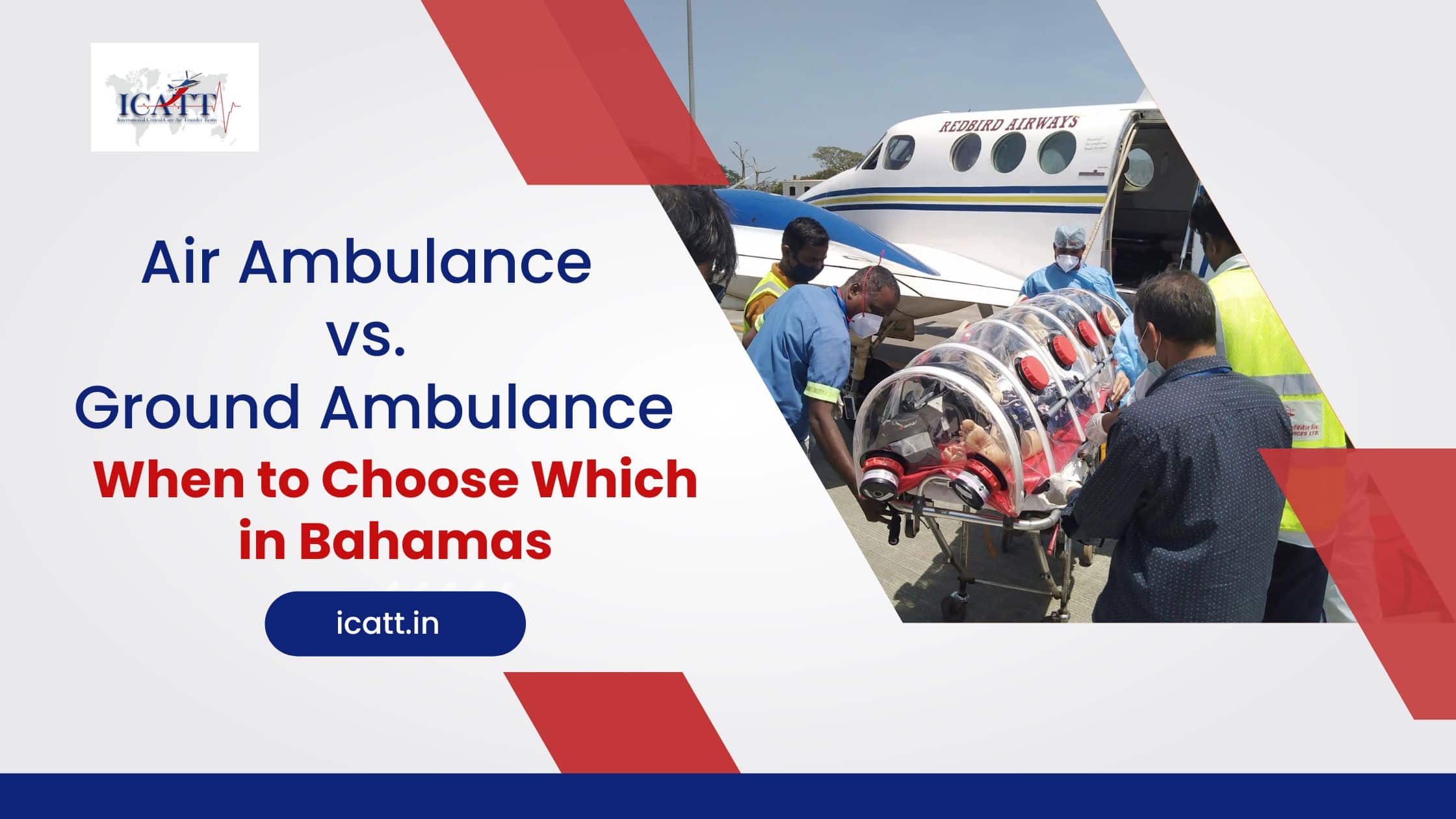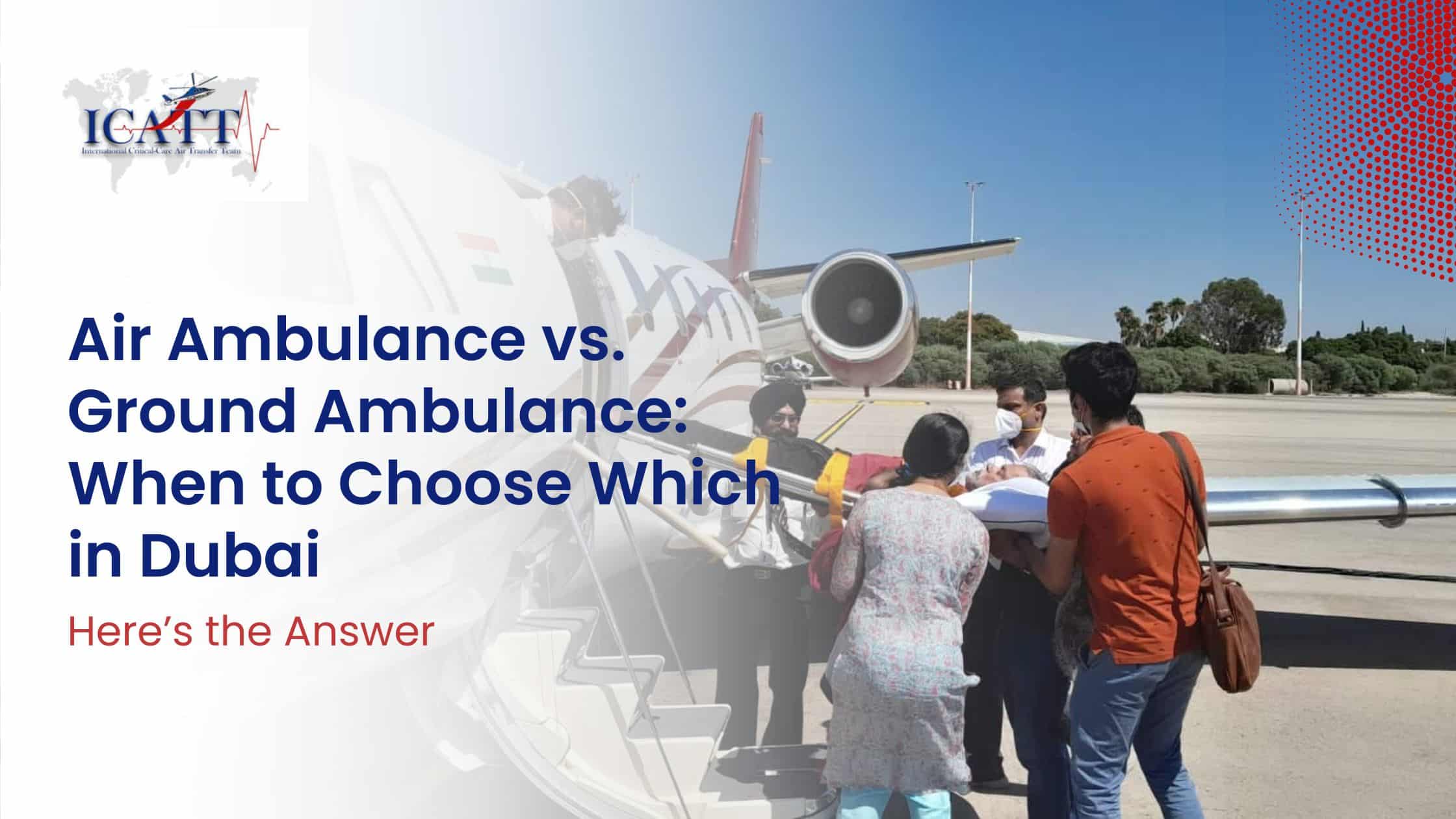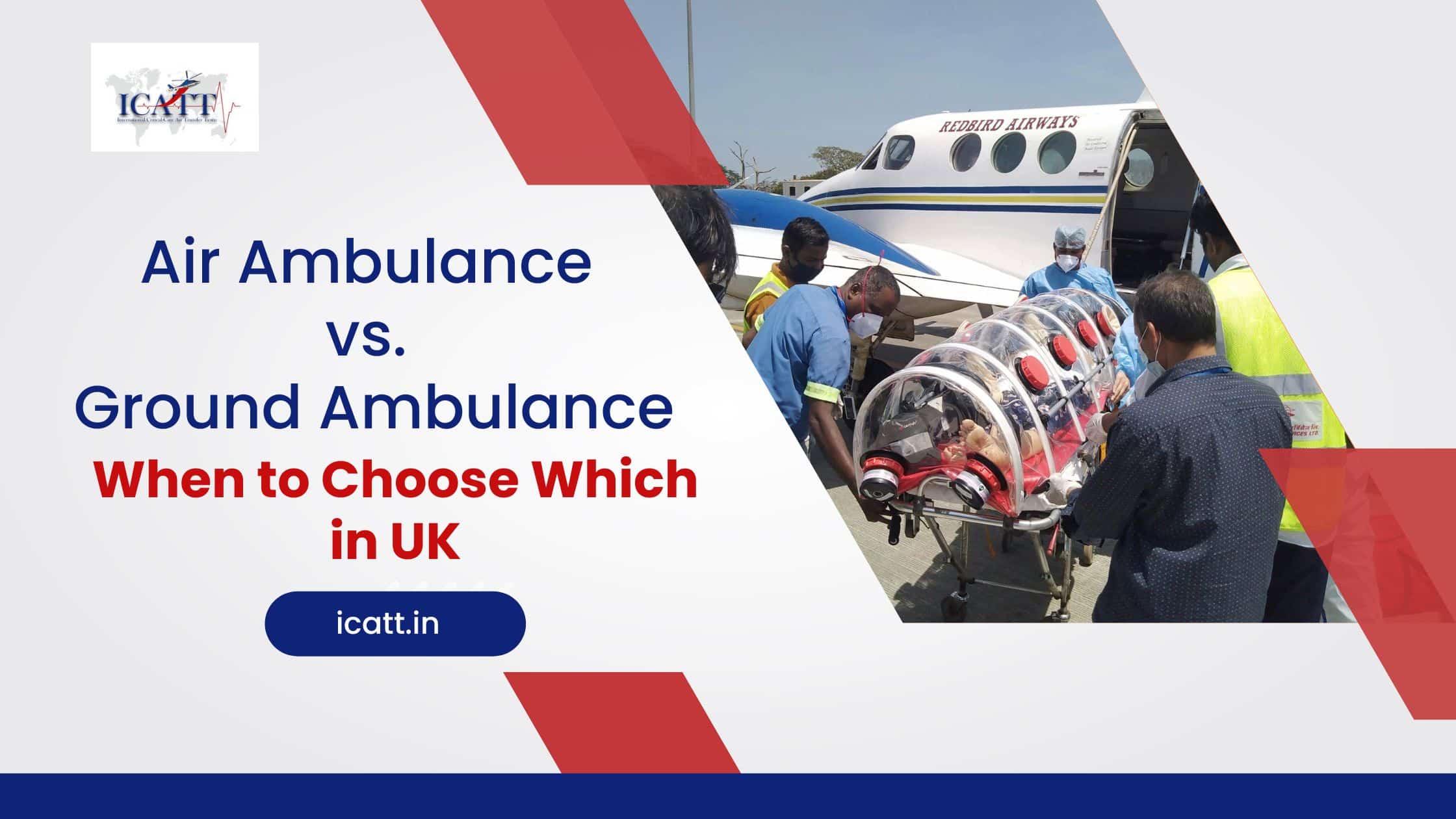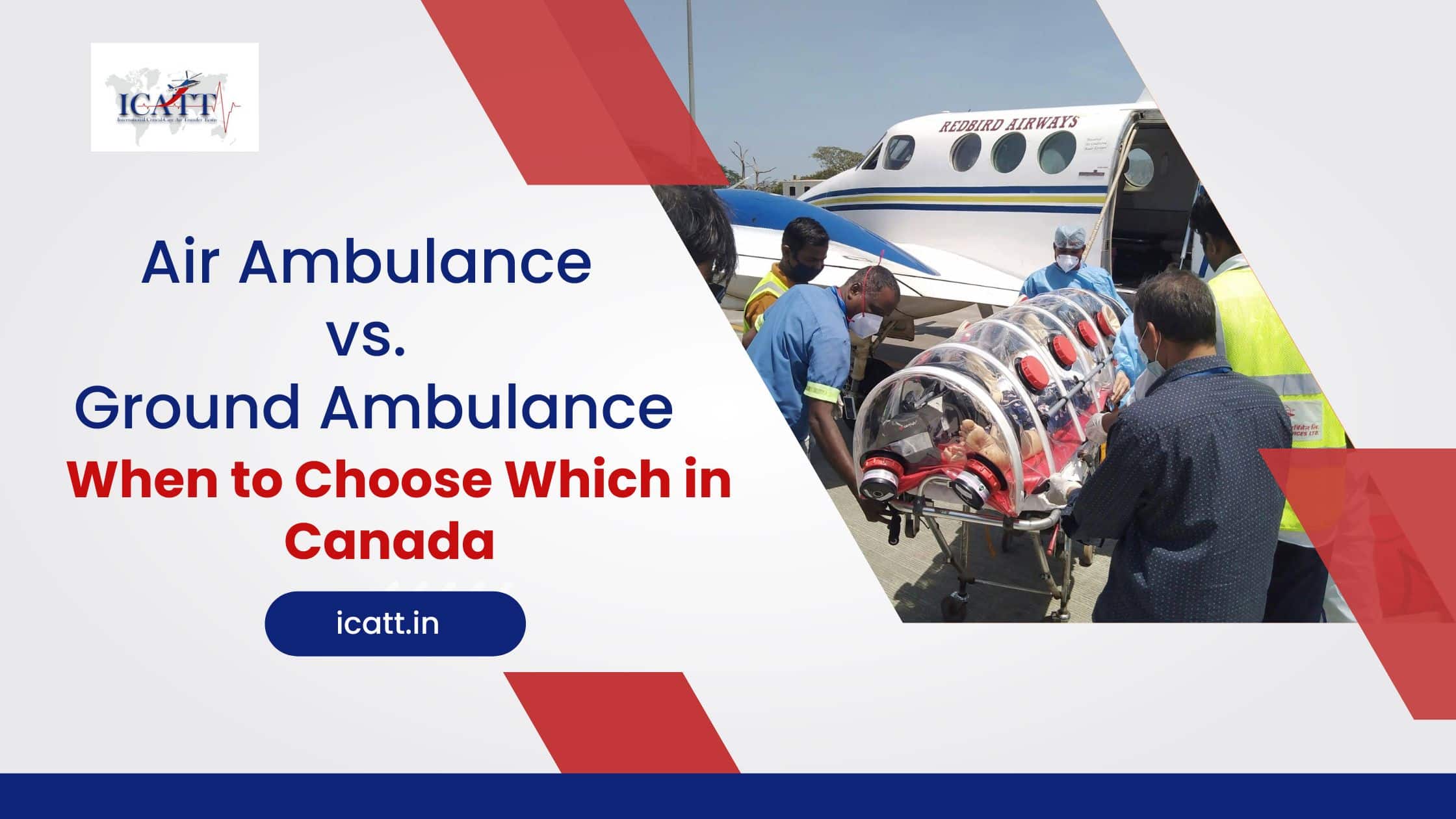You might have seen in a lot of movies, series, or even real-life incidents where a person is transferred from one location to another or flown back to their home country for treatment. And if you have ever wondered does this service exists? If yes, how does it actually work? The answer is yes—Air Ambulance Services are very much real.
This isn’t something entirely new, but it’s a service that has saved thousands of lives. In fact, they are now a modern and advanced part of medical services across the globe. We all know that when someone’s health suddenly takes a turn, every second counts. At that moment road ambulances might not be fast or effective enough. That’s where an Air Ambulance Service comes in. It’s more than just a flying vehicle, it’s like a hospital in the air, ready to offer urgent medical support during critical situations.
In this blog, let’s understand what exactly an air ambulance is and how it works.
What Is an Air Ambulance?
An air ambulance is either a helicopter or a fixed-wing plane equipped with all the necessary medical facilities to transport sick or injured patients who require urgent medical support. These flights are typically used in emergencies, long-distance medical transfers, or situations where a patient needs to reach a hospital that offers better treatment.
Unlike commercial flights, air ambulances are converted into mini-ICUs or customized according to the patient’s medical needs. They carry all the essential machines and medications required for in-flight patient care. And it’s not just about transportation, each flight is operated by a skilled team that includes doctors, nurses, and paramedics trained in critical care.
Who Needs an Air Ambulance?
Here are some common scenarios where an air ambulance service is used:
- Patients in critical condition who can’t wait for treatment, especially when road transport is too slow to reach the hospital on time.
- Accidents in remote areas or locations with limited access to medical facilities, where immediate help is not available.
- Time-sensitive medical cases, such as organ transplant transfers, where every minute matters.
- Transfers from smaller or remote hospitals to larger, better-equipped hospitals in metro cities or even abroad.
- Patients living abroad who fall seriously ill and want to return to their home country for better care and convenience.
- Elderly or immobile patients who require full medical support during travel for treatment or relocation.
These are just a few situations where having access to a reliable air ambulance service can make a life-saving difference.
What’s Inside an Air Ambulance?
Don’t think of it as a regular flight with seats, think of it as a flying emergency room. Depending on the patient’s condition, the aircraft is loaded with:
- Ventilators and oxygen supply
- Cardiac monitors
- IV pumps and life-saving medicines (As per doctors’ advice)
- Suction machines and defibrillators
- Stretchers and medical beds
- Incubators (for infants or newborns, if needed)
- Emergency resuscitation kits
These tools are operated by trained medical professionals who monitor and manage the patient throughout the journey. The listed equipment is usually available on board depending on the requirement, but if any additional equipment is required for the patient’s care, the family or concerned person can connect with the team. Based on medical recommendations, necessary arrangements are made accordingly.
How Does the Service Work?
Here’s a simple step-by-step breakdown of how an air ambulance service typically works:
- A family member, hospital, or insurance company can reach out to the ICATT team for assistance.
- Once the request is received, an initial assessment is done where medical details such as the patient’s current condition, diagnosis, and vital signs are shared.
- After reviewing the information, ICATT’s team assess the situation and confirm whether the patient is fit for air travel. Based on the condition, the appropriate aircraft and medical team are arranged.
- The process includes ground ambulance pick up from the current location to the airstrip, the air ambulance flight itself, and another ground ambulance at the destination to reach the final hospital.
- During the flight, the medical team continuously monitors the patient, provides necessary medical support, and stays in touch with the concerned doctors and hospital staff.
- On landing, the patient is safely handed over to the destination hospital along with complete medical updates.
The entire process is smooth, well-coordinated, and designed to reduce stress for both the patient and the family.
Hence, an Air Ambulance Service is not just a fast travel option, it’s a life-saving solution where time and care matter the most. With trained medical teams, advanced equipment, and a well-coordinated process, these services ensure that patients receive the best possible medical support, whether within India or through international air ambulance service.
In emergencies, access to such a service can truly make the difference between life and death. These aircraft follow strict safety protocols and are maintained regularly. Every case is handled with detailed planning to minimize risks and ensure a smooth, safe transfer.
